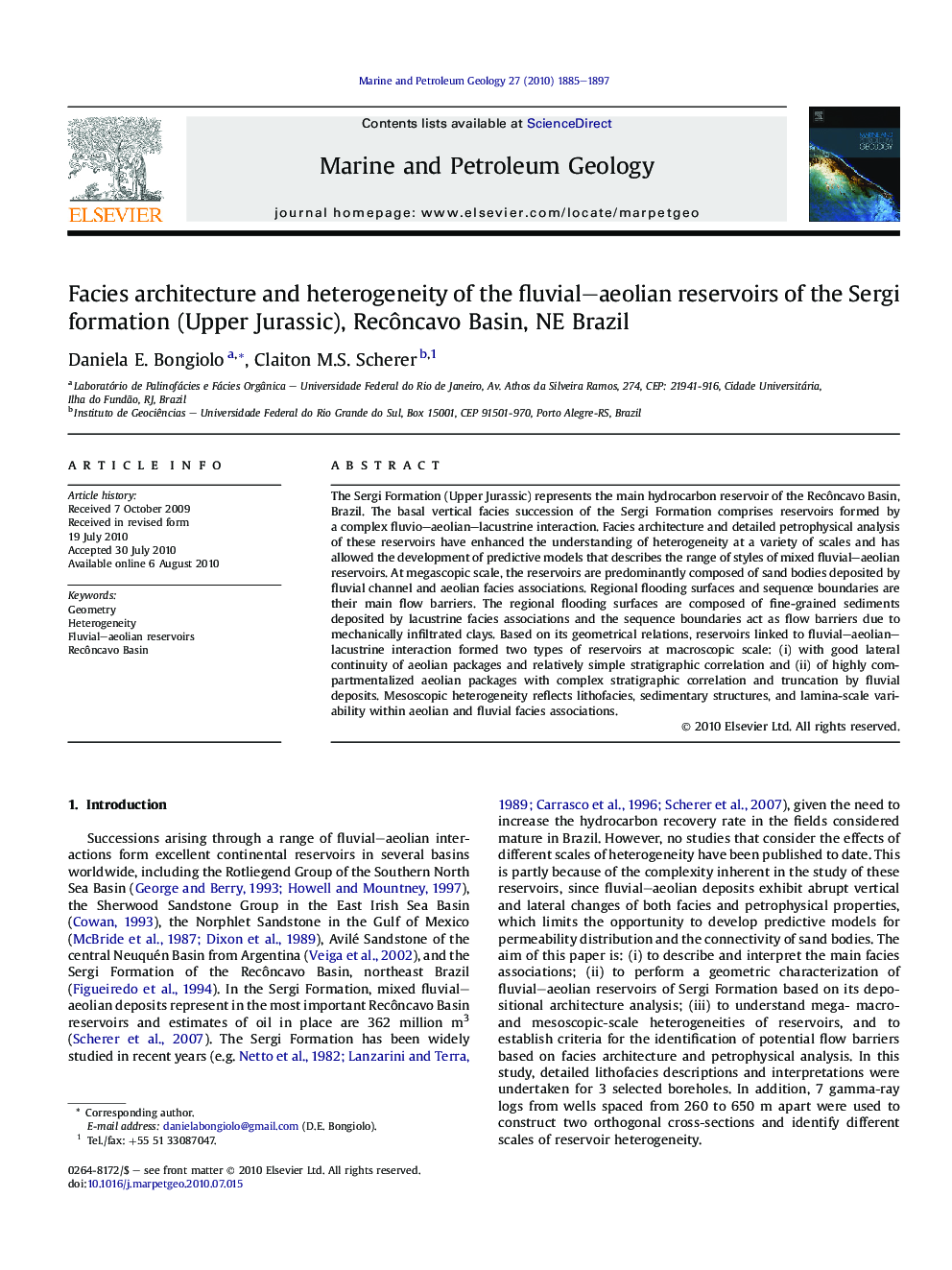| Article ID | Journal | Published Year | Pages | File Type |
|---|---|---|---|---|
| 4696186 | Marine and Petroleum Geology | 2010 | 13 Pages |
The Sergi Formation (Upper Jurassic) represents the main hydrocarbon reservoir of the Recôncavo Basin, Brazil. The basal vertical facies succession of the Sergi Formation comprises reservoirs formed by a complex fluvio–aeolian–lacustrine interaction. Facies architecture and detailed petrophysical analysis of these reservoirs have enhanced the understanding of heterogeneity at a variety of scales and has allowed the development of predictive models that describes the range of styles of mixed fluvial–aeolian reservoirs. At megascopic scale, the reservoirs are predominantly composed of sand bodies deposited by fluvial channel and aeolian facies associations. Regional flooding surfaces and sequence boundaries are their main flow barriers. The regional flooding surfaces are composed of fine-grained sediments deposited by lacustrine facies associations and the sequence boundaries act as flow barriers due to mechanically infiltrated clays. Based on its geometrical relations, reservoirs linked to fluvial–aeolian–lacustrine interaction formed two types of reservoirs at macroscopic scale: (i) with good lateral continuity of aeolian packages and relatively simple stratigraphic correlation and (ii) of highly compartmentalized aeolian packages with complex stratigraphic correlation and truncation by fluvial deposits. Mesoscopic heterogeneity reflects lithofacies, sedimentary structures, and lamina-scale variability within aeolian and fluvial facies associations.
